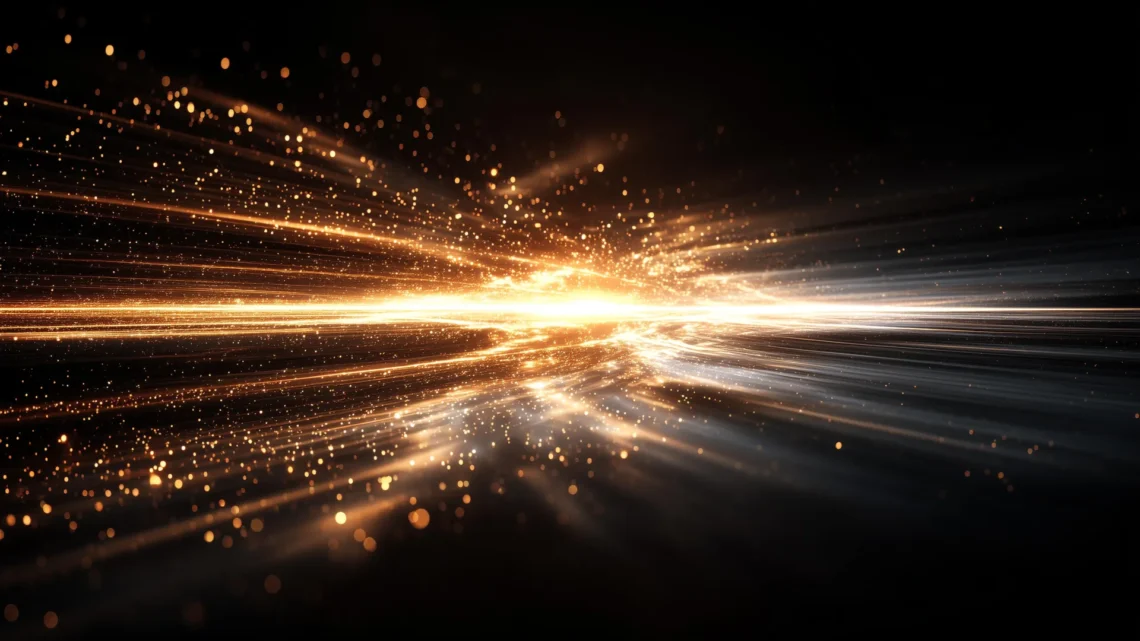Researchers at Hiroshima University have developed a groundbreaking method to detect the Unruh effect—a phenomenon predicted at the intersection of relativity and quantum theory. This innovative approach opens new avenues for exploring fundamental physics and developing advanced technologies.
The findings were recently published in Physical Review Letters.
The Fulling-Davies-Unruh effect, often referred to as the Unruh effect, presents a fascinating theoretical insight at the crossroads of Albert Einstein’s Theory of Relativity and Quantum Theory. “In quantum theory, even what seems like empty space is filled with tiny energy fluctuations, where particles and their opposites briefly appear and vanish. The Unruh effect explains that how these ‘vacuum ripples’ are perceived depends on the motion of the observer. A stationary observer sees nothing, while an accelerating observer perceives them as real particles with a thermal energy distribution—a kind of ‘quantum warmth’,” explained Noriyuki Hatakenaka, professor emeritus at Hiroshima University.
This surprising result highlights the critical link between these two pillars of modern physics. If scientists can experimentally confirm the Unruh effect, it could bridge general relativity and quantum mechanics and offer deep insights into the nature of spacetime itself. However, proving the Unruh effect experimentally has long been a significant challenge in fundamental physics.
“The main hurdle has been the incredibly large accelerations—around 1020m/s2—needed to make this effect noticeable, making its observation practically impossible with current technology in linear acceleration systems,” said Haruna Katayama, assistant professor at Hiroshima University.
The researchers have proposed an exciting new method to observe the Unruh effect. “Our goal is to address this challenge by introducing a novel experimental approach. We utilize the circular motion of pairs of metastable fluxons and antifluxons within coupled annular Josephson junctions,” Hatakenaka stated. Thanks to advancements in superconducting microfabrication, circuits with extremely small radii can be created, producing immense effective accelerations and an Unruh temperature in the range of a few kelvins—detectable with current technology.
“We’ve put forth a highly sensitive, practical, and clear method to detect the elusive Unruh effect. Our proposed system provides a path to experimentally observe this ‘phantom heat’ of acceleration for the first time,” Katayama remarked. In their cutting-edge setup, the “quantum warmth” from the circular acceleration causes fluctuations that result in the splitting of the metastable fluxon-antifluxon pairs. This splitting event manifests as a significant, observable voltage jump across the superconducting circuit. This voltage jump acts as a clear and measurable signature of the Unruh effect’s presence. By statistically analyzing the distribution of these voltage jumps, the researchers can accurately measure the Unruh temperature.
“One of the most striking elements is how microscopic quantum fluctuations can lead to sudden, observable voltage jumps, bringing the elusive Unruh effect into view. Even more remarkable, the distribution of these voltage changes solely shifts with acceleration while all other parameters remain constant—a distinct statistical fingerprint of the Unruh effect itself,” Hatakenaka noted.
Looking forward, Katayama stated, “Our next step will involve a detailed analysis of the decay processes of the fluxon-antifluxon pairs. This will include an in-depth exploration of macroscopic quantum tunneling—a phenomenon where particles can pass through potential barriers—which we didn’t extensively cover in this initial research. Understanding these complex decay mechanisms will be crucial for advancing the experimental detection of the Unruh effect.”
The ultimate goal of their research is multifaceted. Beyond merely detecting the Unruh effect, they seek to explore potential connections between this phenomenon and other quantum fields that relate to their detector. “By deepening our understanding of these unique quantum phenomena, we hope to significantly contribute to the quest for a unified theory of all physical laws,” said Hatakenaka.
The research team’s sensitive detection methods hold great promise for future applications, especially in advanced quantum sensing technologies. “We hope this work will unlock new paths in fundamental physics and ignite further exploration into the true nature of spacetime and quantum reality,” Katayama concluded.
The research team includes Noriyuki Hatakenaka, professor emeritus in the Graduate School of Advanced Science and Engineering at Hiroshima University, and Haruna Katayama, assistant professor in the same department.
This work was supported by JSPS KAKENHI Grants and the HIRAKU-Global Program, funded by MEXT’s “Strategic Professional Development Program for Young Researchers.”
Summary: Researchers from Hiroshima University have introduced a highly sensitive method to detect the Unruh effect, linking relativity and quantum theory. This innovative approach could pave the way for experimental validation of this long-predicted phenomenon, enhancing our understanding of spacetime and potentially leading to advancements in quantum technologies.





